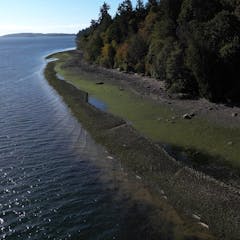
Articles on Biodiversity
Displaying 221 - 240 of 884 articles

Human-wildlife conflict can undermine public support for conservation.

We need more targeted investments in solutions that have a positive impact on nature to reverse biodiversity loss.

Almost 200 countries are reckoning with the world’s extraordinary loss of the variety of life at the COP15 nature summit in Canada. Here’s why Indigenous involvement is crucial.

Digital technologies have the potential to yield positive results, if co-developed and used ethically with Indigenous communities.

Countries have voted to limit the international shark trade, but this fails to account for the diversity in fishing contexts around the world.

China’s international lending projects have big potential impacts on oceans and coasts. By cooperating more closely with host countries, Beijing can make those projects more sustainable.

As we set conservation goals for the next decade, we need to evaluate what worked and what didn’t in our efforts to meet the 2020 biodiversity conservation targets.

Global biodiversity summits have so far lacked a clear target, but this could change if COP15 agrees on the 30x30 initiative to protect 30% of land and sea by the end of this decade.

Cellular and microbial agriculture can make the same amount of food on a fraction of the land.

Negotiators hope to put humanity on a path to harmonious coexistence with nature by 2050.

Polar bears and wolves may get the glory, but small predators like weasels, foxes and their cousins play outsized ecological roles. And many of these species are declining fast.

Pastoral communities should be included in conservation initiatives – but the ecology of pastoral lands has long been misunderstood.

Governments, scientists and conservation groups are working to protect 30% of Earth’s land and water for nature by 2030. Two scientists explain why scale matters for reaching that goal.

The sheer number of Chinese-funded dams pose a substantial risk to biodiversity. And yet, environmental regulation of these projects has serious flaws.

We hear a lot about how humans eating meat is bad for the planet. But if every animal only ate plants, Earth would look dramatically different.

China has rich natural resources and is seeking to play a leadership role in global conservation, but its economic goals often take priority over protecting lands and wildlife.

It’s important that citizen science projects engage volunteers from across society, including young people. A new Australian initiative is doing just that.

About a third of Victoria’s land-based plants, animals and ecological communities face extinction. We look at what the political parties have promised ahead of the state election.

Mountain systems are sensitive to climate change. Loss of snow and ice sets off effects which have wide ranging consequences.

For many environmentalists, overpopulation is a real concern. But the planet will benefit more from tackling overconsumption by rich countries.





